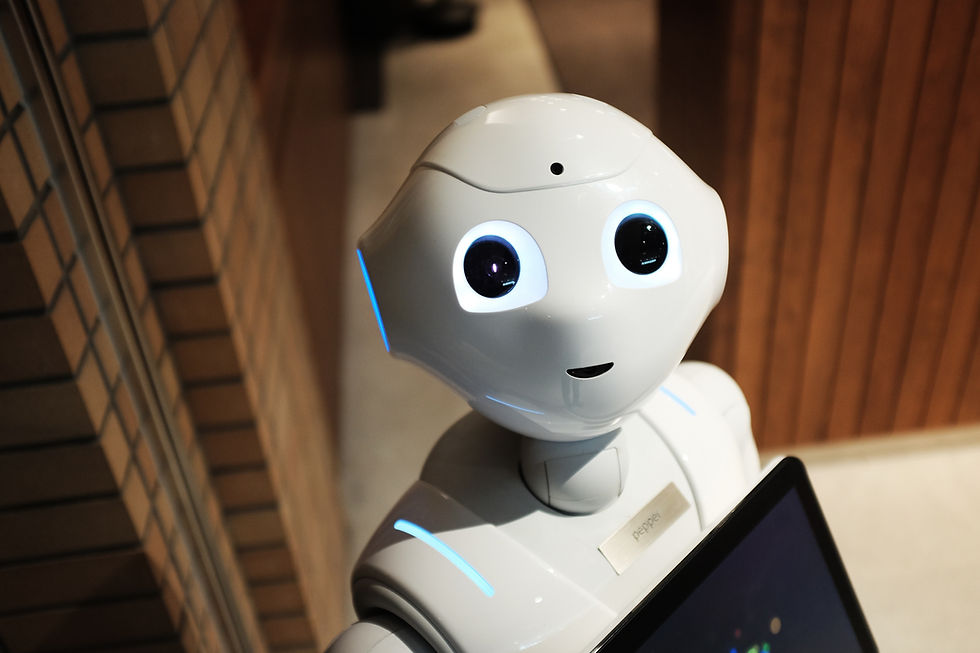How Will AI Integration Reshape the Future of CMMS for Maintenance Decision Making?
- operations481
- Mar 9
- 4 min read
In recent years, maintenance management has undergone a significant transformation, driven by advancements in technology. At the center of this change is the integration of Artificial Intelligence (AI) into Computerized Maintenance Management Systems (CMMS). As businesses increasingly depend on data-driven strategies and automation, AI's role in enhancing maintenance decision-making is becoming clearer. This blog post examines how AI integration in CMMS is changing maintenance practices and the advantages it brings.
The Current State of CMMS
Computerized Maintenance Management Systems have long been essential tools for maintenance planning, scheduling, and tracking. These systems help organizations manage their assets more effectively, ensuring maintenance tasks are completed on time and minimizing unplanned downtime.
However, many traditional CMMS struggle to take full advantage of the data they gather. They provide basic tracking and reporting but often fall short in their ability to analyze data trends or predict equipment failures. For instance, a study by the Aberdeen Group found that companies using predictive maintenance report 30% less downtime. This highlights the pressing need for a smarter CMMS solution that can leverage data effectively.
The Role of AI in CMMS
Integrating AI into CMMS marks a significant shift in maintenance management. By utilizing machine learning and deep learning algorithms, organizations can not only improve their operational efficiency but also enhance their decision-making capabilities.
Predictive Maintenance
One of the most notable benefits of integrating AI is predictive maintenance. AI tools analyze historical data to discover patterns that suggest when equipment might fail. This proactive approach reduces unexpected downtime and boosts efficiency.
For example, a manufacturing plant using AI-driven predictive maintenance saw a 20% reduction in maintenance costs within the first year. Machine learning algorithms examine large sets of data in real time, helping teams prioritize maintenance based on urgency and effect. By anticipating failures, organizations can avoid costly repairs and production halts.
Enhanced Decision Making
AI revolutionizes decision-making by offering insights based on data analytics. Traditional CMMS often depend on manual data inputs and basic reports, resulting in outdated or incomplete information. AI enhances this process significantly.
With AI, organizations can analyze historical performance data, monitor operational metrics, and predict future trends. Maintenance managers gain actionable insights, enabling them to allocate resources efficiently, manage spare parts inventory, and optimize workforce deployment. An organization implementing AI in its maintenance strategy reported a 25% improvement in resource allocation efficiency within six months.
Streamlining Workflows
Incorporating AI into CMMS can greatly streamline workflows for maintenance teams. Intelligent scheduling algorithms ensure that tasks are assigned to the right technicians at the right time, enhancing productivity.
Moreover, AI fosters communication between teams by providing real-time updates on asset performance and project statuses. This clarity leads to better collaboration and quicker decision-making, helping teams resolve issues faster and minimizing delays.
Data-Driven Insights for Continuous Improvement
Continuous improvement is essential for any organization seeking to maintain a competitive edge. AI's analytical capabilities allow businesses to gather and assess data from multiple sources, identifying opportunities for enhancement.
For instance, a utility company that analyzed its maintenance costs and performance metrics with AI identified a 15% reduction in overall maintenance expenses by adjusting their processes based on AI recommendations. By establishing a routine for evaluating practices and costs, organizations cultivate a culture of ongoing improvement.
The Importance of Data Quality
While AI integration can vastly improve CMMS, organizations must focus on data quality. Effective AI models depend on accurate and relevant data to function properly.
Maintaining data integrity involves regular audits and implementing strong data governance practices. Clean data helps AI provide precise predictions and suggestions. For example, companies with high data quality experience a 50% increase in predictive analytics effectiveness, according to industry research.
Challenges of AI Adoption in CMMS
Despite the many advantages of AI in CMMS, organizations may face hurdles during adoption. One significant concern is the initial investment required. Transitioning to an advanced system often demands substantial resources and time.
Additionally, training staff on how to use AI-powered tools effectively is vital. Employees should feel confident interacting with new technologies, which underscores the need for comprehensive training and ongoing support to ensure successful implementation.
The Future of Maintenance Management
As organizations keep embracing digital transformation, AI's role in CMMS will grow even more critical. The landscape of maintenance management looks promising, with AI driving both efficiency and innovative practices.
By deploying AI-driven CMMS, organizations can anticipate enhanced predictive maintenance capabilities, refined decision-making processes, and seamless workflows. Those who harness AI's potential stand to gain a competitive advantage by optimizing their maintenance operations.
Final Thoughts
The integration of AI into Computerized Maintenance Management Systems is set to transform how maintenance decisions are made. By utilizing predictive analytics, refining workflows, and enhancing data-driven insights, organizations can foster a smarter approach to maintenance management.
While challenges relating to data quality and personnel training persist, the potential gains are substantial. As industries advance, incorporating AI-powered CMMS will be essential for organizations looking to stay ahead in maintenance management.
Companies that embrace AI will not only enhance their maintenance processes but will also set new standards of excellence in their fields.






Comments